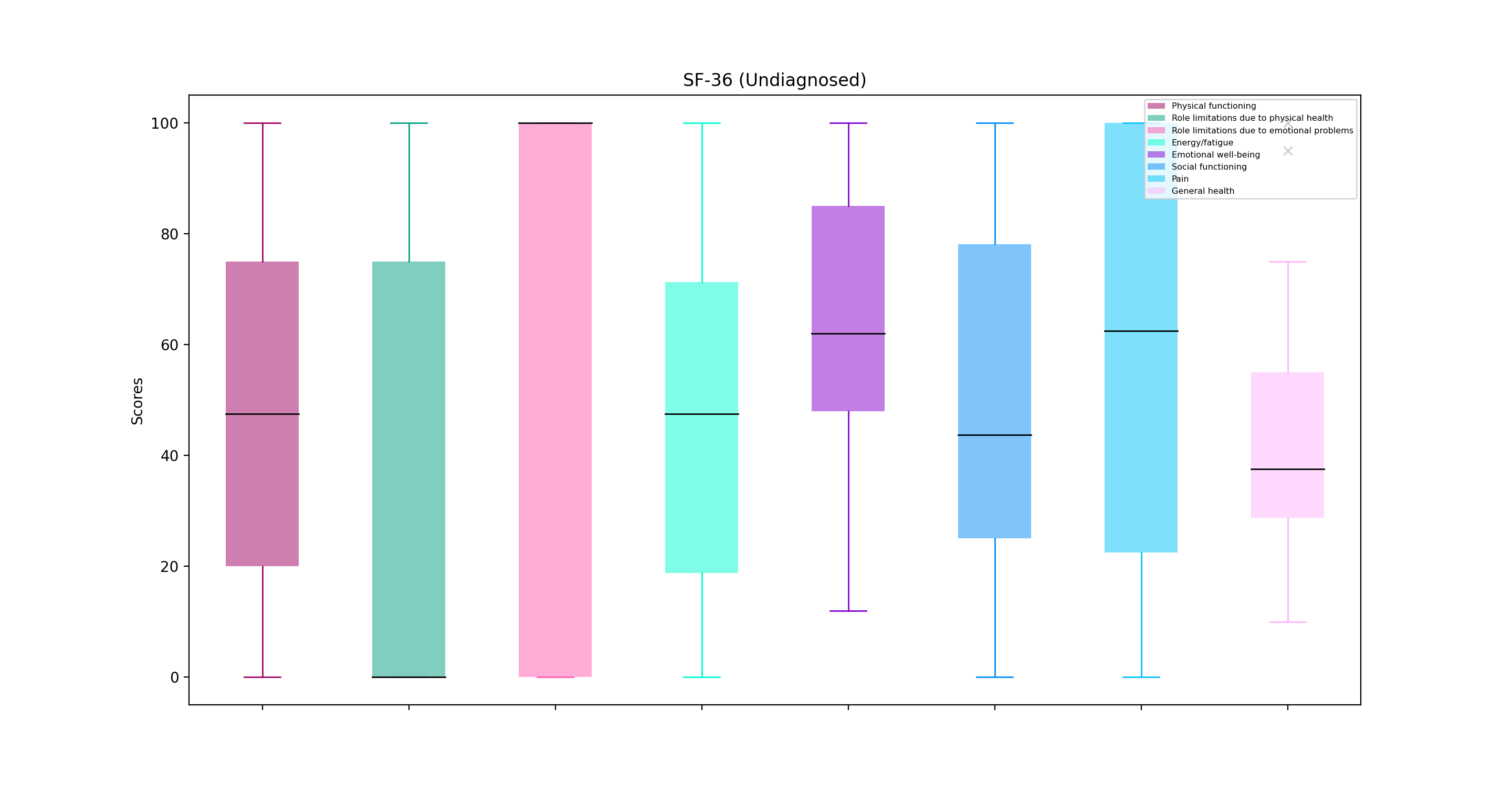
Health-related quality of life in rare diseases

Share4Rare is a growing community with thousands of users (patients, caregivers, and patient organisations) living with rare conditions.
To study the impact and the burden of these diseases, Share4Rare users were asked to participate in the study “Health-related quality of life for people living with rare diseases, consisting of two parts. The first part included 4 questions asking about the diagnosis, symptoms debut, and body systems affected by the disease. The second part included the RAND 36-Item Short Form Survey Instrument (SF-36). This survey is a widely used validated tool consisting of 36 questions about the patients' health perception and their abilities to perform different kinds of day-to-day activities.
SF-36 covers eight health domains:
-
Physical functioning
-
Bodily pain
-
Role limitations due to physical health problems
-
Role limitations due to personal or emotional problems
-
Emotional well-being
-
Social functioning
-
Energy/fatigue
-
General health perception
This tool is validated also for the general population and allows to compare the effects on the quality of life of the disease in specific health conditions.
Share4Rare users among 14 and 82 years old were asked to complete the survey from December 17th 2021 to February 15th 2022. Diseases reported by the Share4Rare users are shown in the graph below:
While the study is still ongoing, we found it interesting to explore the data and analyse several questions related to each item and disseminate them during Rare Disease Day 2022.
Preliminary results are shown in an infographic, which is available for download here.

Description of the study
The SF-36 measures the satisfaction of the patient in these 8 items. The answers of the survey are translated into scores for each domain ranging from 0 to 100. Therefore, the lower the score it is obtained, the worse the health status perceived of each item, and vice versa. This means that the closer an item is to 100, the better the health status is perceived.
An acceptable range would be between 50% and 80% approximately. If the results are below 50%, they could be considered indicative of a moderate or low state of health according to these aspects.
Preliminary results of some of the conditions are shown in boxplot graphs. The mean value of every item is represented by a black line. Brackets show the dispersion of the data, indicating the differences between the answers given by the users.
The results show a great dispersion in the values according to the uniqueness of the rare diseases community, which includes a very diverse number of symptoms, syndromes, diseases, conditions without a diagnosis, and personal experiences that can be different. Results in relation to general health seem to be shared in the different conditions, where the means of the scores are below 50 %.
Preliminary results: scores for undiagnosed Share4Rare patients
The undiagnosed community shows scores above 50% on general health, physical functioning, energy/fatigue and social functioning. This last item is indicating how their diseases, besides unknown, on many occasions limit their physical activities and social relationships.

Preliminary results: scores for the Share4Rare patients living with connective tissues diseases
The community with connective tissue diseases shows a very low quality of life, scoring below the 50% in all the items except for emotional wellbeing, indicating a low quality of life.

Preliminary results: scores for the Share4Rare patients with neuromuscular conditions
The neuromuscular community values are below 50% in:
-
General health
-
Physical functioning
-
Role limitations due to physical health
-
Energy/fatigue

The Share4Rare message on Rare Disease Day 2022
Our results show the need to boost research in rare diseases. The uniqueness of this community and the wide diversity of diseases and syndromes, makes it difficult to obtain representative data that allow scientific analysis. In addition, due to the low prevalence, obtaining a large number of patients who can provide data is challenging. For all of these reasons, on Rare Disease Day 2022, we would like to emphasize the importance of patient-centred research and the need to join forces to advance research.
For that purpose, we ask for your collaboration to disseminate the research studies that we are developing within Share4Rare, including:
-
Health-related quality of life (link to the study)
-
Access to vaccination in people with rare diseases (link to the study)
Please, contact us at info@share4rare.org if you want to receive additional information about the research project.
